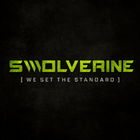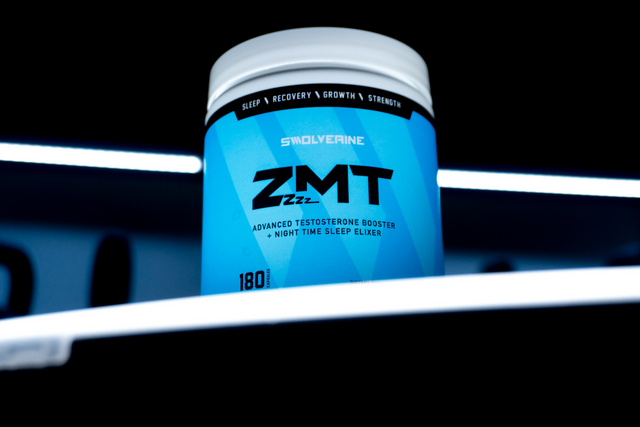When it comes to building muscle, few substances are as debated as Dianabol and testosterone. Both have earned their place in the bodybuilding world, but which one truly reigns supreme? Dianabol, a powerful anabolic steroid, promises rapid gains and improved performance, while testosterone, the body's natural anabolic hormone, offers a more holistic approach to muscle growth and recovery. In this article, we’ll pit these two titans against each other, examining their benefits, side effects, and overall effectiveness in the quest for muscle gains.
Whether you're an athlete looking to optimize your regimen or a fitness enthusiast wondering which option might best suit your goals, understanding the nuances of Dianabol and testosterone is essential to making an informed decision. Dive in as we uncover the facts, separate myth from reality, and help you discover which supplement can elevate your gains to new heights.
Dianabol (Methandrostenolone): A Comprehensive Guide for Muscle Growth
What is Dianabol?
Dianabol, scientifically known as Methandrostenolone, is one of the most well-known anabolic steroids in the bodybuilding community. First developed in the 1950s by Dr. John Ziegler, the compound was created to help the U.S. Olympic team compete against Soviet athletes who were reportedly using testosterone-based performance enhancers.
Ziegler’s innovation quickly gained momentum in athletic circles due to its potency in promoting muscle mass and strength gains. By the 1960s, Dianabol had become a staple in bodybuilding for its fast and significant physical transformations.
Benefits and Effects of Dianabol
Dianabol works by enhancing protein synthesis and increasing nitrogen retention, two key processes for rapid muscle development. This anabolic environment allows users to experience:
-
Noticeable muscle growth within weeks
-
Substantial strength increases
-
Improved workout recovery and performance
These effects make Dianabol a go-to compound for athletes seeking quick gains, especially during bulking phases.
Legal Status and Risks
Despite its effectiveness, Dianabol is classified as a Schedule III controlled substance in the United States, meaning it’s illegal without a prescription. The risk of misuse is high, as individuals often exceed safe dosages to speed up results, leading to serious side effects such as:
-
Liver toxicity
-
Hormonal imbalances
-
Cardiovascular complications
Due to these risks, use of Dianabol outside a medical context remains controversial and legally restricted.
The Role of Testosterone in Muscle Growth
Overview of Testosterone
Testosterone is the primary male sex hormone and a naturally occurring anabolic steroid. Produced mainly in the testes (and in smaller amounts in the ovaries and adrenal glands in women), it plays a key role in:
-
Muscle development
-
Fat metabolism
-
Bone density
-
Sexual and physical function
According to the Mayo Clinic, testosterone is essential for the repair and maintenance of muscle tissue, making it a central hormone in both sports performance and body composition.
Mechanism of Action: How Testosterone Works
Once in circulation, testosterone binds to androgen receptors in muscle cells. This triggers anabolic signaling pathways that promote:
-
Protein synthesis
-
Muscle repair
-
Increased release of Insulin-like Growth Factor 1 (IGF-1)
In a pivotal study published in the Journal of Applied Physiology, Kadi et al. (2000) highlighted testosterone's role in stimulating satellite cells—the precursors to muscle fiber regeneration. These cells are essential for muscle repair and hypertrophy, especially in response to strength training.
Testosterone also improves neuromuscular efficiency, allowing for more powerful contractions and better muscle recruitment during exercise. It influences fat distribution, supporting a leaner physique and reducing risk of metabolic disease.
Testosterone Replacement Therapy (TRT)
When natural testosterone production declines due to age or medical conditions, Testosterone Replacement Therapy (TRT) may be prescribed. As outlined by the Mayo Clinic, TRT can:
-
Restore muscle mass
-
Improve energy and mood
-
Enhance sexual health and bone strength
However, the non-medical use of testosterone for bodybuilding or performance is regulated, with both legal consequences and potential side effects such as infertility, gynecomastia, and cardiovascular risks.
Mechanism of Action: How Dianabol Works
Dianabol primarily exerts its effects by binding to androgen receptors in skeletal muscle tissue. This interaction boosts nitrogen retention and protein synthesis, creating an ideal environment for muscle growth. Since nitrogen is a key component of amino acids, greater retention translates to more effective muscle-building.
Additionally, Dianabol increases glycogenolysis—the process of converting glycogen into glucose for energy. This provides a steady stream of energy during intense workouts, enhancing endurance and reducing fatigue.
However, a major downside of Dianabol is its ability to aromatize, or convert into estrogen. This can lead to:
-
Water retention
-
Gynecomastia (male breast tissue)
-
Excess fat gain
To counter these estrogenic effects, users often include aromatase inhibitors or anti-estrogens in their cycle, although these also carry risks and require careful management.
Both Dianabol and testosterone offer powerful muscle-building benefits, but they also present serious legal and health concerns when used improperly. Understanding their mechanisms, side effects, and legal restrictions is essential for making informed choices.
If you're seeking natural, legal alternatives to enhance muscle growth, consider evidence-backed supplements like:
-
Creatine Monohydrate
-
Essential Amino Acids (EAAs)
-
Natural testosterone boosters
Explore your options at Swolverine.com or apply for customized coaching through The Swole Kitchen to reach your physique goals without compromising your health.
Mechanism of Action: How Testosterone Works
How Testosterone Stimulates Muscle Growth
Testosterone’s role in muscle development is multifaceted, involving both direct anabolic activity and indirect hormonal signaling.
Once in the bloodstream, testosterone binds to androgen receptors located within skeletal muscle cells. This receptor-ligand interaction triggers a chain of genetic and enzymatic processes that enhance protein synthesis—the foundational process for muscle repair and hypertrophy (Herbst & Bhasin, NEJM, 2004).
Testosterone also boosts the production of insulin-like growth factor 1 (IGF-1), which works synergistically to accelerate muscle hypertrophy and tissue recovery (Yarasheski et al., J Clin Endocrinol Metab, 1995).
The Role of Satellite Cells
Another key component of testosterone’s muscle-building action is its effect on satellite cells—stem-cell-like precursors responsible for muscle regeneration. According to Kadi et al. (2000), testosterone enhances both the differentiation and proliferation of these cells, making it essential for long-term muscle growth and adaptation, especially after strength training.
Neuromuscular and Metabolic Benefits
Testosterone also improves neuromuscular efficiency, allowing for better muscle recruitment and more explosive strength output. This enhanced coordination helps athletes train harder, lift heavier, and recover faster.
In addition, testosterone assists in regulating body fat distribution. Higher levels of the hormone are associated with lower visceral fat, promoting a leaner, more defined physique (Mayo Clinic, 2023).
Comparing Side Effects: Dianabol vs. Testosterone
Side Effects of Dianabol
Dianabol, while highly anabolic, comes with a notorious list of side effects, largely due to its estrogenic activity and hepatotoxicity:
-
Water retention and bloating, often resulting in elevated blood pressure
-
Gynecomastia (male breast tissue growth), due to estrogen conversion
-
Negative impact on cholesterol, increasing cardiovascular risk
-
Liver toxicity, as Dianabol is an oral steroid processed through the liver
These risks make cycle length and dosage critical, and many users incorporate liver support supplements and aromatase inhibitors to mitigate adverse effects.
Side Effects of Testosterone
Although testosterone is a naturally occurring hormone, its use in supraphysiological doses can also cause side effects:
-
Acne and hair loss, especially in genetically predisposed individuals
-
Mood changes and increased aggression, sometimes referred to as "roid rage"
-
Prostate enlargement and potential long-term prostate health risks
-
Testicular atrophy and infertility, due to suppression of natural testosterone production
-
Negative effects on cholesterol and potential cardiovascular strain
While less liver-toxic than Dianabol, testosterone use still requires monitoring to avoid hormonal imbalances.
Summary of Risks
| Steroid | Major Risks | Severity |
|---|---|---|
| Dianabol | Liver toxicity, water retention, gynecomastia, cholesterol imbalance | High |
| Testosterone | Hormonal suppression, mood swings, hair loss, cardiovascular risk | Moderate to High |
Both substances require responsible use, with regular blood work and post-cycle therapy (PCT) as essential components of any steroid cycle.
Dosage and Administration: Best Practices
Dianabol Dosage
-
Typical range: 20–50 mg per day
-
Cycle length: 4–6 weeks max
-
Form: Oral tablet
-
Monitoring: Liver enzymes, blood pressure, cholesterol levels
Beginners should start at the lower end of the dose spectrum to assess tolerance. Due to its hepatotoxic nature, it’s critical to avoid prolonged use and to supplement with liver support agents.
Testosterone Dosage
-
Replacement therapy: 100–200 mg/week
-
Performance enhancement: 400–600 mg/week
-
Form: Intramuscular injection (enanthate, cypionate, or propionate)
-
Cycle length: 8–16 weeks, followed by PCT
Performance-enhancing testosterone cycles must include aromatase inhibitors (to control estrogen levels) and post-cycle therapy to help restart natural hormone production.
Monitoring and Support
Whether using Dianabol or testosterone, best practices include:
-
Routine bloodwork (liver function, lipid panels, hormone levels)
-
Post-cycle therapy to reduce suppression
-
Guidance from a medical professional or experienced coach
Legal Status and Accessibility of Dianabol and Testosterone
Understanding the Legal Landscape
The legal status of Dianabol and testosterone varies significantly across countries and even between states or regions. For anyone considering their use—whether for medical reasons or performance enhancement—understanding these laws is essential to avoid serious legal consequences.
In the United States, both Dianabol (Methandrostenolone) and testosterone are classified as Schedule III controlled substances under the Controlled Substances Act. This designation makes it illegal to possess, distribute, or use either compound without a valid medical prescription.
Violations can lead to criminal charges, including hefty fines and prison time, especially in cases of intent to distribute or trafficking.
Dianabol: Legal Restrictions and Black Market Risks
Dianabol’s classification as a Schedule III anabolic steroid means that legal access is extremely limited in the U.S. It is not approved for medical use in most countries, including the United States, and its manufacturing and distribution are largely restricted to underground labs or black-market sources.
Due to these restrictions, many users turn to unregulated or illegal sources, which poses serious risks:
-
Counterfeit products
-
Contaminated or mislabeled compounds
-
Inaccurate dosing
Countries like Canada, the United Kingdom, and Australia also heavily regulate or ban Methandrostenolone. In these regions, importing or possessing Dianabol without authorization can result in customs seizure, legal penalties, or criminal prosecution (World Anti-Doping Agency, 2024).
Testosterone: Legal Medical Use vs. Performance Enhancement
Testosterone, while also tightly regulated, is more accessible through legitimate medical channels. It is commonly prescribed as part of Testosterone Replacement Therapy (TRT) for individuals diagnosed with hypogonadism or age-related testosterone decline.
TRT is legal in many countries when prescribed by a licensed physician. However, using testosterone for muscle building or athletic performance without a prescription is still illegal and falls under the same Schedule III classification in the U.S. (U.S. DEA, 2024).
Obtaining testosterone without medical oversight introduces similar risks to Dianabol use:
-
Improper dosing
-
Illegitimate or contaminated products
-
Increased risk of side effects due to lack of monitoring
Access and Regulation: What to Know Before You Use
Access to both Dianabol and testosterone is shaped by:
-
National regulatory frameworks
-
Healthcare system policies
-
Medical practitioners’ willingness to prescribe anabolic agents
While some online pharmacies and overseas suppliers may advertise these substances, many operate in a legal gray area or are outright illegal. The U.S. Food and Drug Administration (FDA) frequently issues warnings about online steroid purchases due to high rates of fraud and contamination (FDA, 2023).
Final Considerations
Anyone considering Dianabol or testosterone for muscle growth or performance enhancement should:
-
Consult a licensed healthcare professional
-
Understand local laws and international customs regulations
-
Avoid black market or unregulated sources
The legal and health consequences of unauthorized use can be severe. For those looking to optimize performance legally and safely, consider FDA-compliant natural alternatives, available through evidence-based supplement companies like Swolverine or structured nutrition and fitness coaching from The Swole Kitchen.
Conclusion: Making an Informed Choice for Muscle Gains
In the quest for muscle gains, both Dianabol and testosterone offer compelling benefits, but they come with their own sets of risks and considerations. Dianabol is known for its rapid and significant muscle-building effects, making it a popular choice for those seeking quick results. However, its potential side effects, including liver toxicity and estrogenic effects, require careful management. The legal status of Dianabol further complicates its use, as it is heavily regulated and often illegal without a prescription.
Testosterone, on the other hand, provides a more holistic approach to muscle growth and overall physical health. Its gradual and sustainable effects, along with its role in promoting well-being and recovery, make it a valuable option for many athletes and bodybuilders. The side effects of testosterone, while present, are generally more manageable with proper dosing and monitoring. The legal availability of testosterone for medical use also makes it a more accessible option for those with legitimate medical needs.
Ultimately, the choice between Dianabol and testosterone depends on individual goals, tolerance levels, and the ability to manage potential side effects. Consulting with healthcare professionals, understanding the legal implications, and considering personal health and fitness objectives are crucial steps in making an informed decision. Whether opting for the rapid gains of Dianabol or the comprehensive benefits of testosterone, responsible use and careful planning are essential to achieving optimal results and maintaining overall health.
In conclusion, the debate between Dianabol and testosterone is not about finding a definitive winner but rather about understanding the unique advantages and challenges each substance presents. By weighing the benefits and risks, individuals can make informed choices that align with their muscle-building goals and long-term health. Whether you choose Dianabol, testosterone, or a different approach altogether, the key to success lies in knowledge, responsibility, and a commitment to achieving your fitness aspirations safely and effectively.
Find similar articles:
Anabolics






